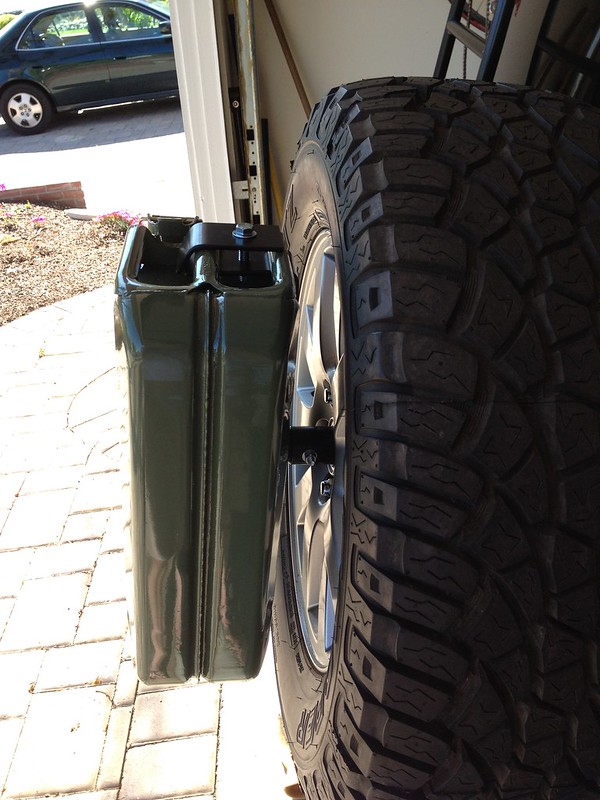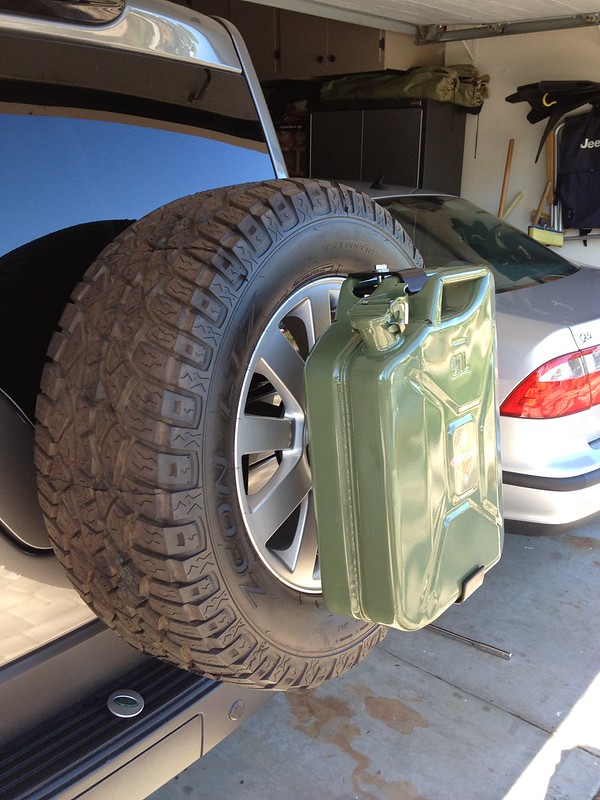DVD
Adventurer
Had my LR3 for almost a yr, and realizing that some outside carrying capability would be a nice addition. The immediate requirement is a solution for carrying extra gas (and spare tire and hi-lift and etc.). A roof rack is the obvious, probably most cost-effective and practical solution.
But, we camp a lot and sleep in the back of the lr3. My wife especially likes the sense of sleeping under the stars with the 3 big roof windows. I'm worried that a roof rack would make it feel like San Quentin. That's why I'm considering that a rear bumper/tire carrier would have benefits of:
* getting (full size spare) tire out from underneath
* place to hang a couple jerry cans for longer trips
* also hang a hi-lift (future planning, as I don't have sliders nor hi-lift at present)
* keep center of gravity lower (not a huge deal, but with our shelf roads and washouts in AZ trails, not entirely inconsequential)
* maybe come up with some solution for a water carrier under the vehicle (where spare was).
* keep the open feeling of sunroofs.
Can anybody with a roof rack comment on how it affects the sense of openness, obscuring the "panorama roofs" or whatever they call it on LR3s? Maybe the rack bars aren't such a big deal and you'd see right through them. I'm leaning towards baja rack, so that would be most pertinent.
Thanks!
But, we camp a lot and sleep in the back of the lr3. My wife especially likes the sense of sleeping under the stars with the 3 big roof windows. I'm worried that a roof rack would make it feel like San Quentin. That's why I'm considering that a rear bumper/tire carrier would have benefits of:
* getting (full size spare) tire out from underneath
* place to hang a couple jerry cans for longer trips
* also hang a hi-lift (future planning, as I don't have sliders nor hi-lift at present)
* keep center of gravity lower (not a huge deal, but with our shelf roads and washouts in AZ trails, not entirely inconsequential)
* maybe come up with some solution for a water carrier under the vehicle (where spare was).
* keep the open feeling of sunroofs.
Can anybody with a roof rack comment on how it affects the sense of openness, obscuring the "panorama roofs" or whatever they call it on LR3s? Maybe the rack bars aren't such a big deal and you'd see right through them. I'm leaning towards baja rack, so that would be most pertinent.
Thanks!





